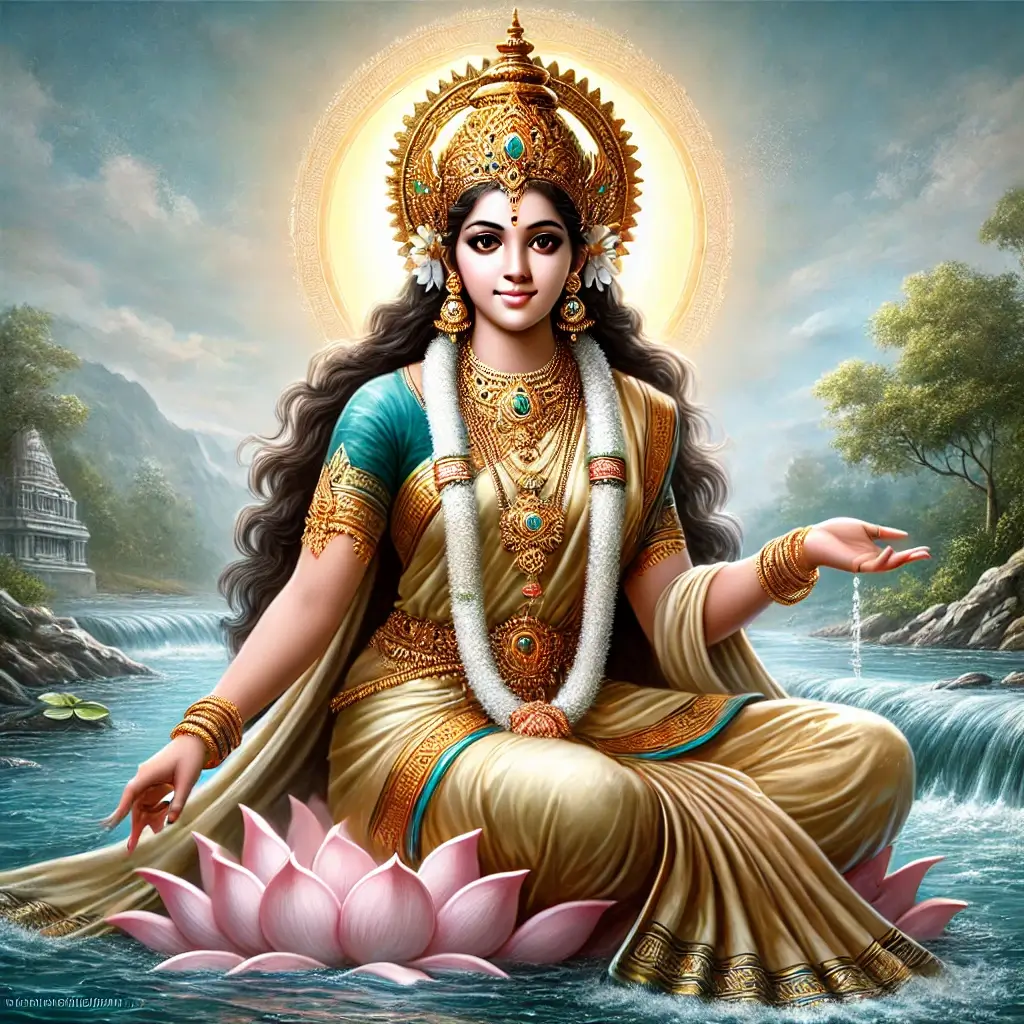The Kaveri River holds profound spiritual significance in Hinduism and is revered as one of the seven sacred rivers of India. Known for its life-giving properties, the Kaveri is considered a manifestation of Goddess Kaveri, offering purification, blessings, and spiritual upliftment to devotees. This sacred river plays an essential role in Hindu rituals, festivals, and divine narratives, making it a key pilgrimage site in southern India.
Divine Origin of Kaveri River
According to the Skanda Purana, the Kaveri originates from a celestial being, Lopamudra, an incarnation of Goddess Parvati. She descended to earth to bless humanity by taking the form of the river. In one divine narrative, she marries the revered Sage Agastya, who carries her in his kamandalu (water pot). When the pot is placed on the ground, the Kaveri River flows out, creating a lifeline for the people of South India, particularly the states of Tamil Nadu and Karnataka.
Kaveri’s Role in Hindu Rituals and Spiritual Purification
The Kaveri River is often referenced in ancient Hindu scriptures like the Mahabharata, Ramayana, and various Puranas for its power to purify sins and lead to moksha (liberation). Bathing in the holy waters of Kaveri is believed to absolve one’s sins, making it a key destination for pilgrims. Sacred rituals and prayers are performed along its banks, and the river is a crucial part of South Indian religious traditions.
Kaveri and Sage Agastya: A Divine Account
Another divine narrative highlights Sage Agastya’s connection with the Kaveri. To prevent a drought, he contained the river in his pot. However, Lord Ganesha, disguised as a crow, overturned the pot, allowing the river to flow freely and nourish the land. This divine intervention symbolizes the Kaveri’s role as a provider of life and fertility to the earth.
The Blessings of Kaveri in South India
Often referred to as the Ganga of the South, the Kaveri River blesses the fertile lands of Tamil Nadu and Karnataka, particularly the Cauvery Delta region. The river supports agriculture and is considered a source of both spiritual and material nourishment. According to the Kaveri Mahatmya in the Skanda Purana, the river’s course is dotted with holy sites where devotees gather to perform rituals and prayers.
Festivals and Worship of Kaveri River
The Kaveri Sankramana festival, observed in October, celebrates the spiritual importance of the river. During this time, thousands of devotees perform rituals to honor Kaveri, seeking prosperity, health, and spiritual purification. The river is regarded as a motherly figure, and many worship her as a goddess, praying for protection and blessings.
The Kaveri River is more than a natural watercourse; it is a sacred river deeply intertwined with Hindu spirituality and divine narratives. Its role in purification, life-giving properties, and connection to ancient Hindu rituals makes it a crucial pilgrimage site. The spiritual significance of the Kaveri River is celebrated through festivals, rituals, and sacred texts, underscoring its importance in the religious landscape of southern India.

|
|
|---|---|
| Information | |
| Origin | Talakaveri in the Brahmagiri range of the Western Ghats, in the Kodagu district of Karnataka |
| Confluence | Bay of Bengal at Poompuhar in the Mayiladuthurai district |
| Distance traveled | 475 miles (765 km) |
| Direction traveled | Southeasterly direction |